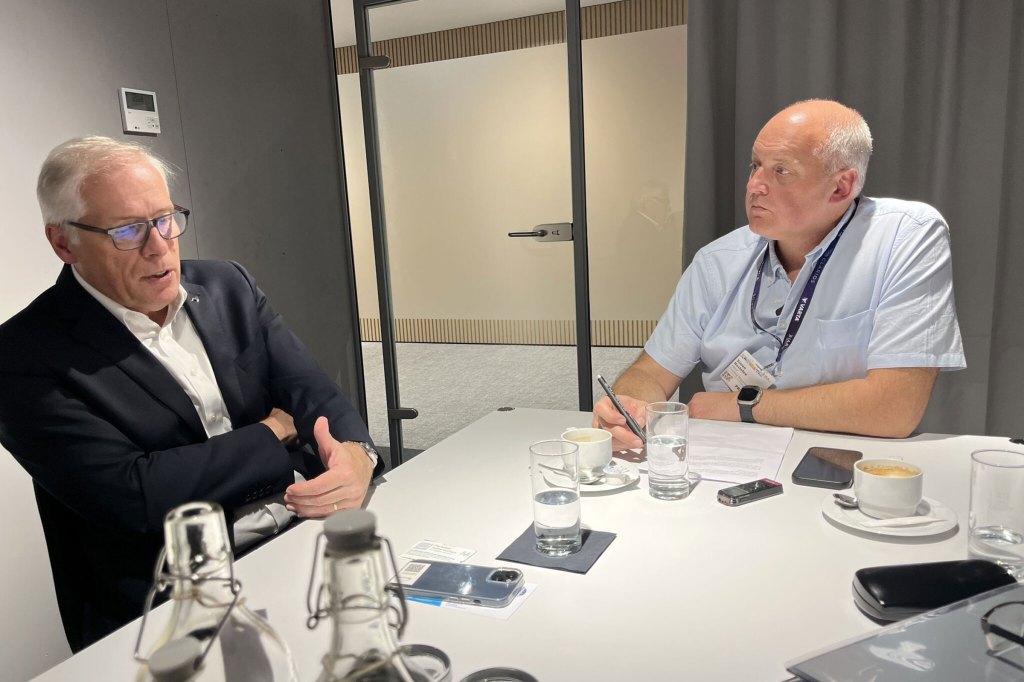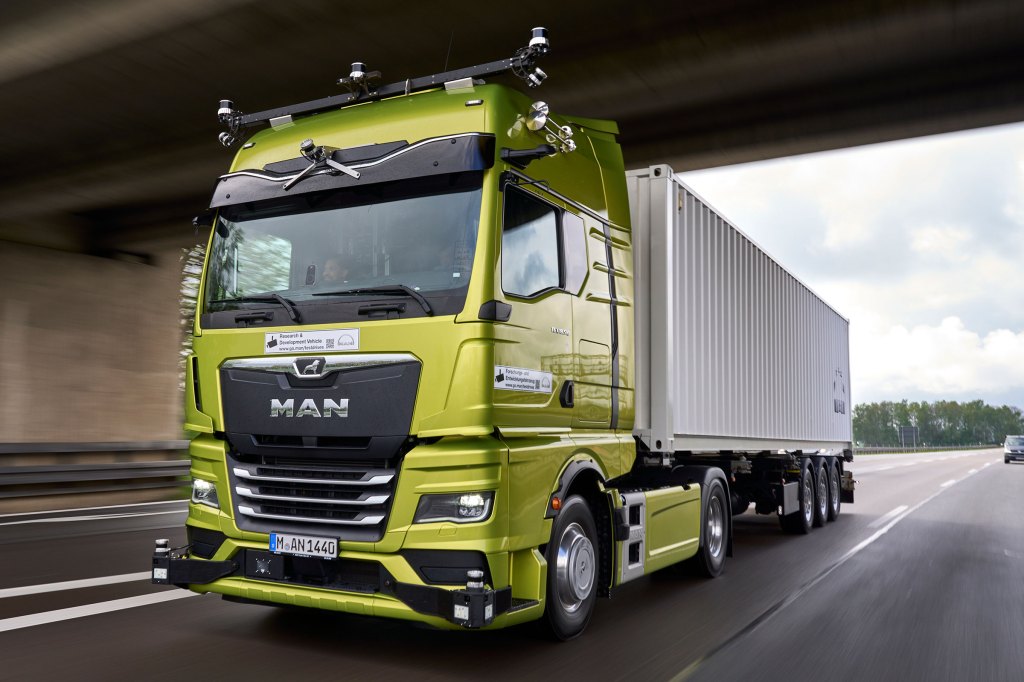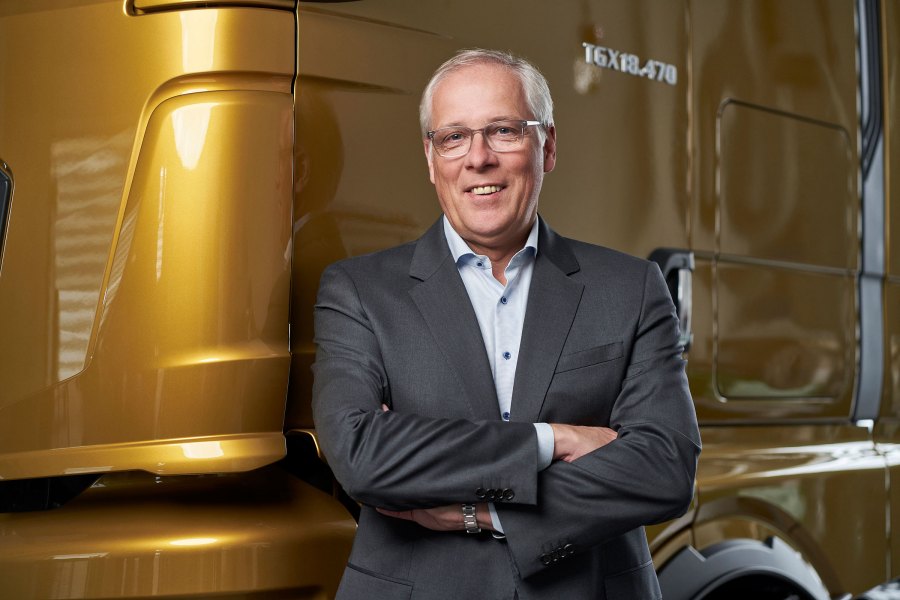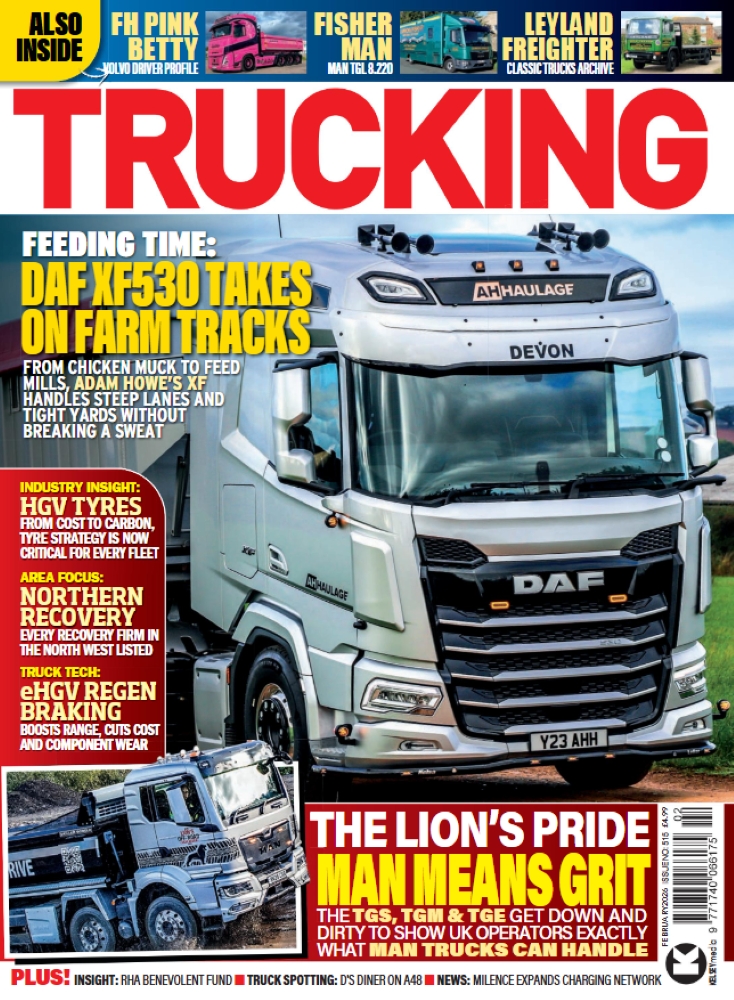In a comprehensive interview with Friedrich Baumann, Executive Board Member for Sales & Customer Solutions at MAN Truck & Bus, we explored the company’s strategic direction and the ongoing transformation in the HGV sector. With the global focus on decarbonisation, technological advances, and the evolution of infrastructure, MAN is positioning itself as a leader in this space, balancing the demands of battery-electric vehicles (BEVs), hydrogen propulsion, and the future of diesel powertrains. Baumann shared his views on these issues, offering insight into the company’s approach and its challenges.

Electrification and the Long Road to Mass Adoption
Electrification is no longer just a vision for the future—it’s an active part of MAN’s product development strategy. However, the road to mass adoption is far from straightforward. “For over 100 years, we’ve relied on diesel technology and are now transforming into alternative propulsion. But it’s not just about putting something else into the engine,” Baumann said, highlighting the complexity of transitioning from diesel to new forms of energy.
Baumann explained that mass adoption of BEVs for long-haul HGVs is an evolutionary process rather than an immediate shift. “It’s not like you’re flipping a switch and suddenly everyone is running in that direction. We have to be prepared for an early stage of adoption, where operators test and trial these vehicles to understand how they fit into their operations,” he noted.
Another crucial factor is the infrastructure required to support the widespread use of electric trucks. “You cannot achieve mass adoption without proper infrastructure,” Baumann said, emphasising that this challenge requires governmental and political support. “We need more commitment and investment into infrastructure from political bodies, whether in London or Brussels. This is essential if we want to scale the use of BEVs.”
For now, many customers rely on depot charging setups to meet their needs. Baumann provided examples of how some operators are developing their own charging infrastructure to handle long-haul operations. “I’ve talked to customers who are planning 800-kilometre routes each day with a battery-electric vehicle, and they’re setting up depot charging at both their own sites and at their customers’ locations,” he explained. “This gives them predictable pricing and control over their charging schedules, which is crucial in the early stages of electrification.”
Hydrogen’s Role in MAN’s Product Lineup
While MAN is firmly committed to BEVs, Baumann acknowledged that hydrogen power has a role to play in certain applications. “We believe battery-electric vehicles will be successful in the mid to long term, but we estimate that about 10 to 15 per cent of market applications will need alternatives,” he explained. For MAN, hydrogen combustion engines are a more practical solution than hydrogen fuel cells. “Hydrogen combustion is much quicker to develop, as we can convert our existing 15-litre diesel engines into hydrogen combustion engines with relatively few changes.”
Baumann’s confidence in hydrogen combustion stems from personal experience. “I recently drove our hydrogen combustion truck during summer testing, and I can tell you, it drives just like a diesel. The transition from diesel to hydrogen combustion is more intuitive for customers than moving to fuel cells or BEVs,” he said. However, whether hydrogen will be a long-term solution or just a bridge technology remains to be seen. “The question is: will hydrogen be around for a decade, or will it become more significant in the future? Only time will tell,” Baumann stated.
The Continued Importance of Diesel Technology
Although electrification is gaining momentum, Baumann was clear that diesel powertrains are not going anywhere just yet. “Even in 2030, we expect a 50-50 split between zero-emission technologies and diesel,” he said. Diesel engines are still critical to MAN’s product offering, especially in markets where electrification is slower. “We’re introducing a new powertrain, the D30 power line, which combines an engine, transmission, and after-treatment system. This is designed to meet the stringent Euro 7 requirements.”
However, Baumann pointed out that the costs of diesel technology are rising. “Every percentage point of efficiency improvement on diesel engines will get more expensive as we lose scale, while battery technology will become cheaper as it scales up. This is a market dynamic we expect to see play out over the next decade,” he explained.
Helping Customers Transition to Electric Fleets
Making the leap from diesel to electric vehicles can seem daunting for fleet operators, with concerns about cost, infrastructure, and vehicle range. MAN is addressing these concerns by offering a comprehensive support package for its customers. “It’s not just about selling vehicles anymore,” Baumann emphasised. “We’re providing a full solution that includes coaching, infrastructure planning, and financial tools to help customers through the transition.”
Baumann highlighted the importance of understanding the total cost of ownership (TCO) when making the switch to electric vehicles. “We’ve developed digital tools to help our customers calculate their break-even point when transitioning to BEVs. I’ve spoken with customers who, even with the higher upfront costs, are reaching break-even within four to five years,” he said. For operators with predictable charging setups and significant daily mileage, the economics of electric trucks are already making sense. “One customer I spoke with is running 800 kilometres daily on the German autobahn and expects to break even in just over three years.”
In addition to consultancy services, MAN offers flexible financing models to ease customers’ upfront cost burden. “We’ve partnered with financial institutions to provide interesting financing models, which make it easier for operators to spread the cost of their investments. This includes not just the vehicles but also infrastructure such as charging points,” Baumann added.
Autonomous Trucks and Connected Solutions
Beyond electrification, MAN is investing heavily in autonomous driving technologies and connected solutions, which Baumann sees as critical to the future of the industry. “All of our vehicles are now equipped with a telematics box, meaning they’re connected. This enables us to offer predictive maintenance and helps operators manage their fleets more efficiently,” Baumann explained.
While the technology for autonomous trucks is advancing, Baumann identified one key challenge: route autonomy. “It’s not just about making the vehicle autonomous; it’s about making the route autonomous. The route needs constant updates on digital mapping, traffic conditions, and weather. This is where the real complexity lies,” he explained.
Baumann predicted that fully autonomous trucks could be seen on hub-to-hub routes by the decade’s end. “I think we’ll see autonomous trucks operating on short, controlled routes—hub-to-hub operations—within the next five to six years. This will help solve some of the challenges we’re facing, such as driver shortages and the need to shorten long-distance supply chains,” he said.
Looking Ahead: The Future of HGVs
As MAN Truck & Bus moves forward, it is clear that the future of HGVs lies in a blend of technologies. While battery-electric vehicles will play a significant role, hydrogen and diesel will still have a place in the market. “There’s no one-size-fits-all solution,” Baumann said. “Each market and each operator has different needs, and we’re committed to offering a range of technologies to meet those needs.”
With its focus on electrification, hydrogen propulsion, and autonomous driving, MAN is positioning itself as a leader in the transition to sustainable transport. However, Baumann was keen to point out that the journey is far from over. “This is an ongoing transformation, and it requires collaboration between manufacturers, governments, and operators. We’re committed to helping our customers navigate this transition every step of the way.”

When discussing the timeline for autonomous trucks in the UK, Friedrich Baumann expressed cautious optimism but highlighted several challenges that could affect the deployment of these vehicles in the near term.
Autonomous Trucks in the UK: When Will We See Them?
Baumann predicted that fully autonomous trucks could be operational in specific controlled environments, like hub-to-hub routes, by the end of the decade. He emphasised that route autonomy is the primary challenge rather than the vehicle technology itself. “The real complexity lies in making the route autonomous, not just the vehicle. You have to constantly update digital maps, traffic conditions, and weather patterns,” Baumann explained.
For the UK, this means that while the technology may be ready, the infrastructure needs to be in place, particularly in terms of digital mapping and consistent road maintenance. Furthermore, he pointed out that adverse weather conditions—common in the UK—can pose additional challenges. “What happens when it snows? What happens when road markings are not visible? These are the hurdles we need to overcome,” he said.
Baumann was also cautious about how quickly the UK market will embrace autonomous driving, especially compared to other regions like the US. He noted that in places like Arizona, where MAN has tested autonomous trucks, the weather is less of an issue, and routes can be more predictable. “In Europe, especially in the UK, the weather and the unpredictability of routes add layers of complexity,” he said.
However, he did see hub-to-hub operations as a more immediate area where autonomous trucks could make headway in the UK. “Shorter, controlled distances between logistics hubs are the most likely first applications for autonomous vehicles,” Baumann predicted. He suggested that this type of relay operation—where autonomous trucks run between hubs and human drivers take over for last-mile deliveries—could alleviate some of the current issues in the haulage industry, such as driver shortages.
In terms of a concrete timeline for when autonomous trucks could be seen on UK roads, Baumann hinted at the latter half of the decade, saying, “By the end of the decade, I believe we’ll see autonomous trucks in hub-to-hub operations, with drivers out of the truck entirely.” However, he was clear that widespread adoption across all types of roads and weather conditions would take longer.
In summary, while fully autonomous trucks are unlikely to be commonplace on UK roads in the immediate future, Baumann’s prediction of their presence in controlled environments by the late 2020s suggests that the technology is closer than many may expect. For now, the focus will be on perfecting the necessary infrastructure and addressing the specific challenges posed by the UK’s road network and weather conditions.
Friedrich Baumann has been a member of the Executive Board of MAN Truck & Bus SE since April 2022 and is responsible for Sales and customer Solutions. He was previously on the Executive Boardce 2018, where he was responsible for the aftersales organization, including the Parts and service, Uptime, of Navistar sin and Warranty departments. In his last role, he transformed Navistar’s sales business into an integrated organisation.
Baumann began his career in 1993 at Daimler Trucks North America. There and at other Daimler AG companies, he held various management positions in purchasing, used vehicles, and remanufacturing. Prior to joining Navistar, Baumann led Daimler Trucks North America’s aftermarket business and was a member of the Operating Committee.






